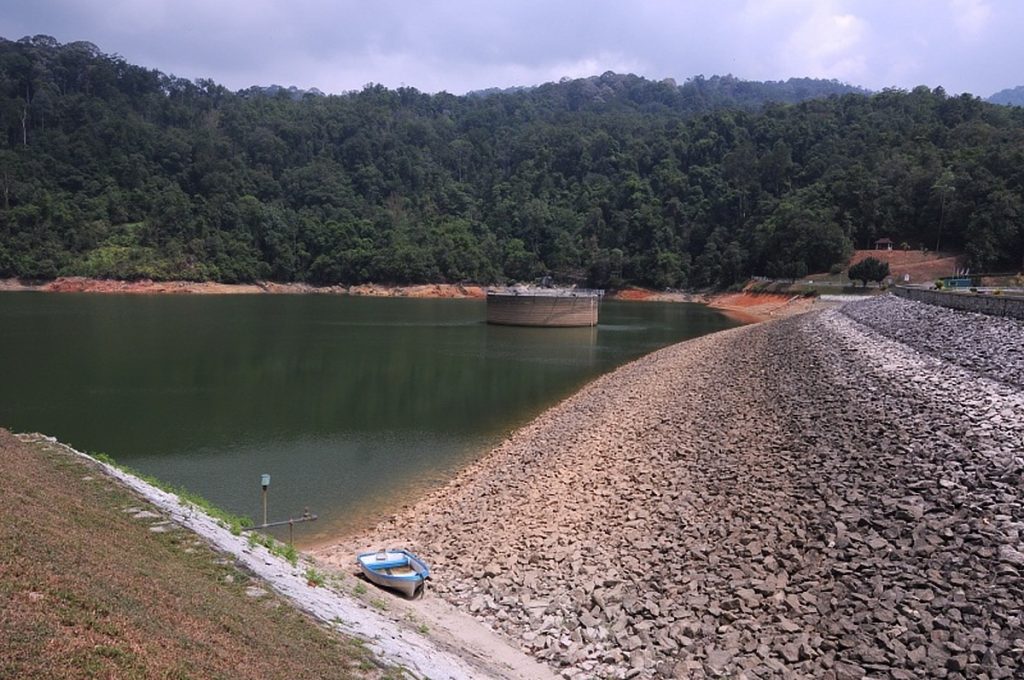Malaysians are no stranger to hot weather, as the tropical climate here means it is often bright and sunny throughout much of the year. However, in recent weeks the hot and dry weather has taken a turn for the worse, causing many to suffer from the daily heat and lack of water.
Parents, do make sure that your little ones drink enough water each day and that they are well-hydrated after running around all day. For parents with school-going children, you should also take note that the Ministry of Education has also cautioned schools to be on alert about the weather, especially during outdoor activities.
This hot and dry weather with little rain is expected to last until March. As a result, water experts are advising the public to be prudent when it comes to using water.
Decrease in Water Supply
Throughout the peninsular, state water operators are reporting that water levels have decreased in rivers and dams that supply raw water to treatment plants, said National Water Services Commission (SPAN) chairman Charles Santiago.
In Penang, the Penang Water Supply Corporation (PBAPP) has warned the public about the state’s water supply. They reported that the Air Itam Dam’s water level had dropped by over 24%, going from 92.2% on Jan 1st to 67.3% on Feb 18th. Similarly, the water level in Teluk Bahang Dam has also decreased, dropping from 79.1% to 78.8% in the same period.
PBAPP chief executive officer Datuk Jaseni Maidinsa cautioned all Penangites to use water wisely during this dry season, according to The Star. He advised the public to fix all leaking taps or pipes immediately, and to use water sparingly for non-essential usage such as washing cars or motorcycles.
Meanwhile in Malacca, state executive councillor Datuk Mohd Sofi Abdul Wahab said that the dams are not yet at a critical level. However, he noted that the persistent hot weather called for prudent management of water, according to The Star.
Mohd Sofi added that the state’s dams have sufficient supply as water levels at main dams such as Jus and Durian Tunggal are not at a critical stage. Additionally, the state government had preemptive measures in place to avoid water shortages.
Update: The situation in Johor has turned serious as water levels in four key dams have dropped, including two dams that have hit critical level. These dams are the Layang (Upper) Dam, Sembrong Barat Dam, Sungai Lebam Dam and Lok Heng Dam.
The water level at Sungai Lebam Dam has dropped to around two metres below critical point, according to Bernama.
The normal water level of the dam is 14m, with the critical level at 12.7m. However, current readings show it at 10.9m, said Johor International Trade, Investment and Utilities Committee chairman Jimmy Puah Wee Tse.
Residents around the Kota Tinggi area are urged to use water sparingly until the dry spell ends, as the dam has only enough water to supply its 100,000 residents for about 70 days, reported The New Straits Times.
The other critical dam is the Lok Heng Dam, with water levels a mere 50cm above its critical level. The water supply can only last 21 days, and would affect about 20,000 residents.
Conserve Water
SPAN stated that the water supply nationwide is still under control. However, Santiago’s advice is a preemptive measure as this lack of rain is expected to continue.
The Meteorological Department had predicted that throughout the month of February, places in the peninsular would experience dry weather with less rainfall until the end of the northeast monsoon in March.
Santiago added that SPAN is working closely with state governments to keep a close eye on water levels in rivers and dams. All state operators have been asked to report daily on the water supply. He also urged the public to report any leakages of water pipes to the state water operators or SPAN.
For more information about parenting and family, please visit Motherhood.com.my.
